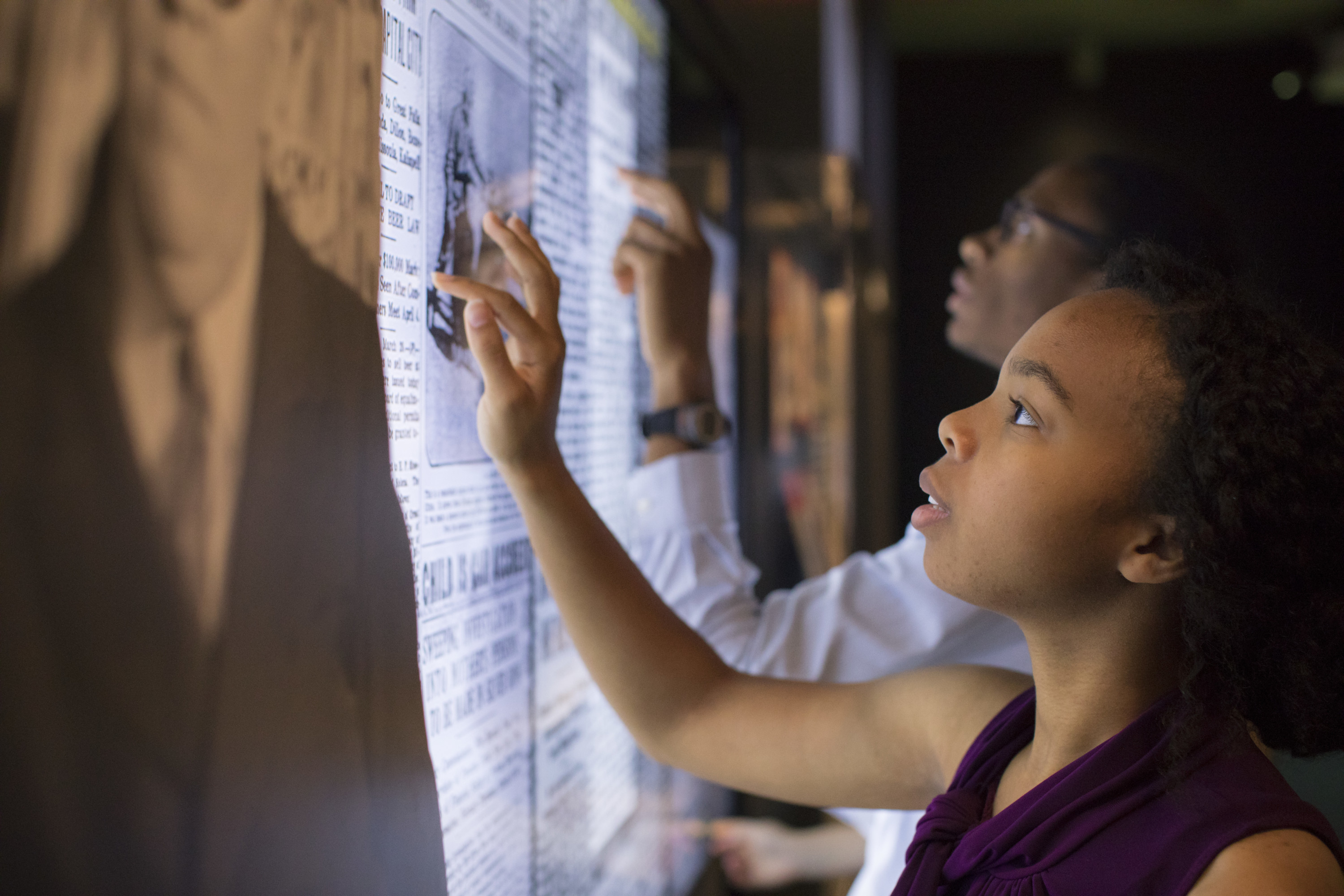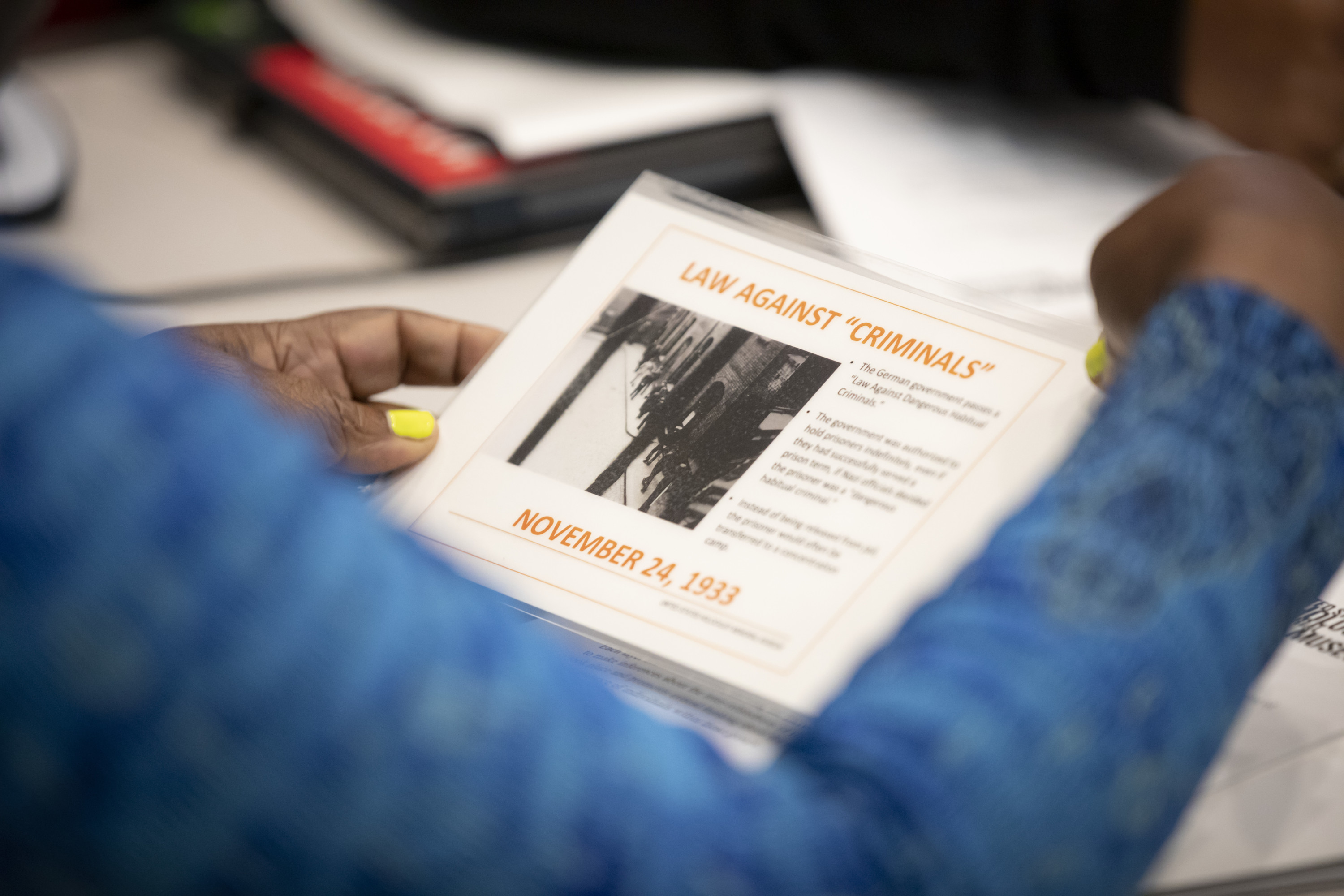The Museum’s American and the Holocaust Initiative focuses on Americans’ responses to the Holocaust in the 1930s and 40s. The film by Ken Burns, Lynn Novick, and Sarah Botstein, The U.S. and the Holocaust, was partly inspired by the Museum’s exhibition on this topic.
These teaching resources promote reflection and critical thinking about various factors that shaped attitudes and actions during that time and the factors that influence us today.

Racism and Antisemitism Lesson
Students critically analyze how racism and antisemitism fueled Nazi ideology and politics and guided the actions taken by Germany and its collaborators.
Classroom-Ready Content and Lessons
This collection of lessons and resources have been curated by Museum historians and educators to support exploration of American and Holocaust history in today’s classrooms.
Holocaust Timeline Activity
This multi-layered wall timeline encourage students to think critically about the relationship between Nazi policy, WWII, historical events, and individual experiences during the Holocaust.
Behind Every Name: Animated Stories
A series of short animations, along with an accompanying lesson, share personal stories that allow students to examine unique individual experiences within the historical context of the Holocaust.
Challenges of Escape, 1938–1941
An examination of the factors that led German Jews to seek to leave their country and the complications impeding their immigration to the US in the 1930s and 1940s.
Racial “Science” and Law in Nazi Germany and the United States
Students examine the national and historical contexts in which racism manifested in Nazi Germany and the US and learn how the pseudoscience of eugenics and concerns about “racial purity” were legalized in the two countries.
Black Americans and the Nazi Olympics
Students examine Nazi Germany during the 1930s and anti-Black racism in Jim Crow-era America—two distinct places during the same historical period—and analyze the impact of antisemitism and racism in the past and present.
Understanding Nazi Symbols
Starting with the history and meaning of the swastika, this lesson examines the origins of symbols, terms, and ideology from Nazi Germany and Holocaust-era fascist movements seen in contemporary American culture.
Analyzing Memes
A framework to evaluate memes that link current events to history and analyze their message and meaning.
The Americans and the Holocaust Exhibition
Americans and the Holocaust explores what Americans knew about the Holocaust and what more could have been done. This exhibition examines the motives, pressures, and fears that shaped Americans’ responses to Nazism, war, and genocide.
Exhibition Tour and Viewing Guide
In this 39-minute tour, Dr. Daniel Greene, US Holocaust Memorial Museum historian and exhibition curator, provides a tour of the exhibition and an overview of the history, themes, and artifacts presented throughout.
Exploring the Online Exhibition
This lesson prompts students to explore the online exhibition, critically analyzing various factors that shaped attitudes and actions taken by the government, the media, other organizations, and individual citizens in response to the Holocaust.
Primary Source Research
History Unfolded asks students, teachers, and history buffs throughout the United States what was possible for Americans to have known about the Holocaust as it was happening and how Americans responded. Participants do research in their local newspaper archives to find news stories about 46 different Holocaust-era events that took place in the United States and Europe. To date, more than 50,000 articles have been collected. These lesson plans are based on articles collected for the project:
- US Newspapers and the Holocaust
- Youth Responses
- Black Press Newspaper Coverage of the Holocaust
- Spanish-Language Newspaper Coverage of the Holocaust (available in English and Spanish)
Expansive Case Studies
By examining these case studies, students will identify multiple economic, social, and geopolitical factors that influenced public opinion and key decisions about the United States’ role in the world from 1939 to 1941.
- Immigration and Refugees: A Case Study on the Wagner-Rogers Bill
- Isolation or Intervention? A Case Study on the Lend-Lease Act
Additional Lessons and Activities
These teaching resources support continued examination of American and Holocaust history.
- Examining the Holocaust and World War II (a professional development course co-created with Echoes & Reflections and PBS LearningMedia)
- Americans and the Holocaust: The Refugee Crisis (a teaching unit co-created with Facing History & Ourselves)
- Ken Burns in the Classroom: The U.S. and the Holocaust ((lesson plans offered by PBS LearningMedia)






